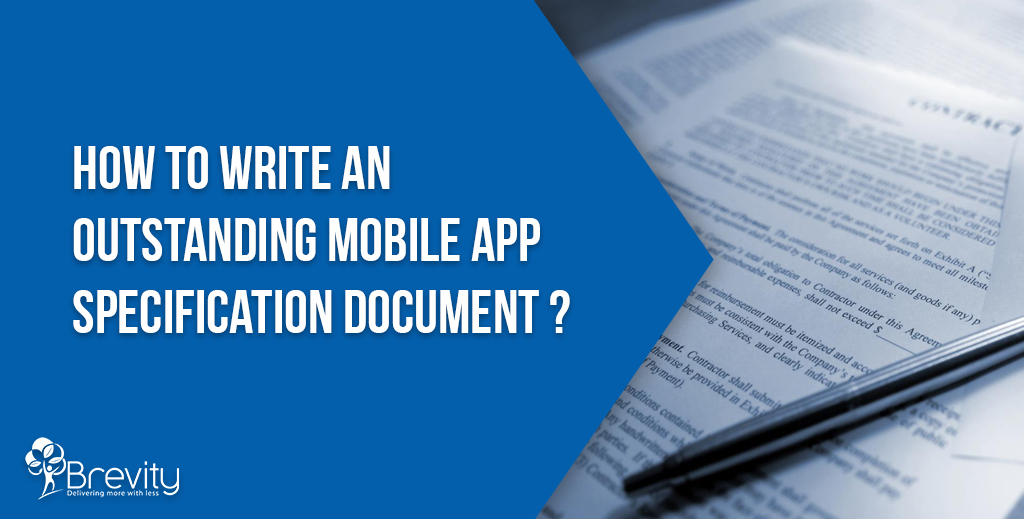
You might think why to write mobile app requirements?
Well, imagine that you need a mobile application developed for your business. However, you don’t have any programming skills. So, you find and hire a mobile app development company that can build the app for you and discuss all your requirements with them. Surprisingly, when they showcase the app, you find that it is not exactly the way you wanted it to be. The reason being that you didn’t provide them the detailed requirements and specifications for your app at the time of discussion.
To avoid this from happening, it is necessary to write a mobile app specification document and share it with the developers. This will leave no chances of any vague information and will ensure that you and your mobile app development company are on the same page.
One of the reasons why a majority of start-ups fail is due to their inability to write the requirements of the project. To compete with your competitors in the mobile app market, writing mobile app specification document becomes a necessary aspect.
In this article, we will outline some basic steps to write the mobile app specification document.
1. A short background of yourself
The very first base for establishing a communication with your mobile app development company is providing a brief background of yourself. You need to let them know some of the vital information pieces such as whether it is your first project or you already have an experience? Do you have any knowledge of mobile app development? etc. This will help the developers understand your project in a better way and give suggestions wherever necessary.
2. A brief introduction to your app
Here, you need to give a brief introduction of what type of app you want. A proper description of an app can be a single line describing the core feature of your app so that it can be instantly understood what type of app you want.
3. Determine the potential audience
When you are developing an app you are not creating it for yourself. You are creating it for the other people out there who have completely different culture and computer skills than you. Ask the question who are you creating this for? Based on this, identify the potential target audience for your app. It is always a good strategy to do the research and know your market in the beginning. This is the one question your developer will surely ask you before commencing your project. Because this will help them to know the age group of the users. Based on this anticipation, they will be able to create a personal customer persona.
4. Define the goals
Ask the question why are you creating this app or what is the main purpose of your app? The answer to these questions will let you define the goals of your app. Are you creating your app to support your online business or to increase the traffic to your app? All these will define the goal of your app.
5. Functional requirements
Describe in detail what features do you want to provide to the users through your app. Move step by step and describe all the functionalities of your app. Describe the user interface, user experiences, layout, design everything for your app.
6. Choosing the operating system
Based on the target audience and the budget of your app, determine the operating system on which you want to create your app – Android or iOS. Many times, apps are created on both the platforms.
However, this is not the only choice to be made. You also need to select between two rival platforms too – Native and Hybrid. Native apps are programs that are developed for one platform only. On the other hand, hybrid apps is a combination of native apps HTML5 built with HTML5 and JavaScript. If you don’t know much about these platforms, leave it to the app developers to help you out.
7. The choice of languages
Once you have selected the best platform for your app, it’s time to make a choice over the coding language. The two major languages used in the mobile application development are Swift and Objective C. If you aren’t sure which one use, leave it again on the app developers.
8. Differentiating factors
Be specific about the factors that differentiate your app from the other apps in your category. There are millions of apps currently present in the app stores. So it is obvious that there will be many apps already present with an idea similar to yours. So, be very clear about the factors that make your app stand out from the rest of the crowd.
9. Budget estimation and project deadlines
Mobile app development can be costly. So, it is a good strategy to decide the budget beforehand. This will help the app developers to determine whether your project is ready to go or not. Along with the cost estimation, you should also decide the deadlines and milestones of your project.
10. App maintenance
App maintenance is an integral part of the app development process. Once your app is launched, you will need maintenance services both in terms of design and development. Moreover, once the real users will start using your app, a need for other additional functionalities will also arise. So, it is advisable to discuss the maintenance terms with the app development company in the beginning so that they can give the quotation accordingly.
11. Other additional information
This can include any other additional information you might want to give regarding your app.
Conclusion:
Write your mobile app specifications in a simple, lucid language. Try to be as elaborative as you can while describing your app and its functionalities. This can help you to get a precise quote.